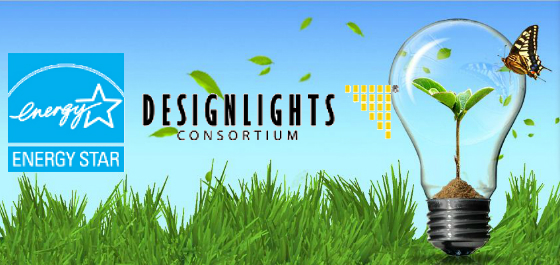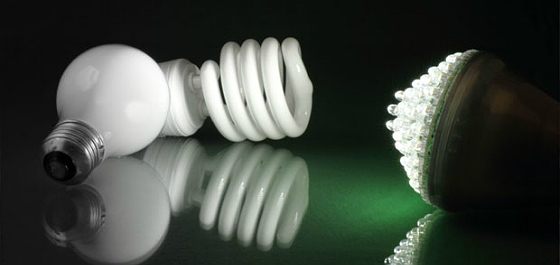Difference Between Energy Star and DLC

If you’ve compared different energy efficient light bulbs, you may have noticed some are identified as Energy Star products while others have the DLC label. Sometimes buyers get confused on what these two energy efficient groups are all about and why some lights have the stamp of approval from one group but seemingly not the other.
So, let’s clear the confusion by explaining what these organizations do and how they are different from each other.
Energy Star
This is the commonly known program started by the US Environmental Protection Agency (EPA), which aims to use labeling and education to help businesses and individuals save money and choose products that are safer for the environment. Manufacturers can choose whether or not they want to participate in this program and earn the Energy Star label.
Timeline of Energy Star History:
- Started in 1992 for the primary purpose of reducing air pollution.
- In 2005, the Department of Energy (DOE) and EPA broadened the project’s mission to include the promotion of energy efficient products and buildings, to reduce energy consumption, and lower all types of pollution.
- As of 2006, there are over 40,000 types of Energy Star products on the market, and 4.5 billion were sold in the last 20 years.
- Energy Star has become an international standard and the program is used in countries all over the world.
More than likely, you’ve seen the blue Energy Star label on certain light bulbs and other appliances. This label lets you know a particular product has met efficiency standards set forth by the EPA and DOE, and it is likely more environmentally friendly than similar products without the blue label.
To earn the label, products are tested by a third-party in an EPA-certified laboratory before going to market. Also, those same items are periodically pulled off the shelf for random testing to make sure no changes were made to the product’s makeup. In other words, it’s not particularly easy to earn the Energy Star designation.
DesignLights Consortium
The DesignLights Consortium (DLC) is similar to the Energy Star program, except it is a regional group that concentrates specifically on energy efficiency in the lighting industry. It is a part of the Northeast Energy Efficiency Partnerships (NEEP) and was initially focused on the Northeast and Mid-Atlantic areas.
The goal of the DLC is to promote energy efficient lighting in the building sector by influencing public policy and spreading strategies and education. Much of the progress and innovation we’ve seen in the lighting market is thanks to the efforts of the DLC.
Timeline of DLC History:
- DLC was started in 1998 by NEEP members who realized energy efficient lights didn’t have to equal poor light quality.
- The DLC then started the “knowhow series,” which guided electrical contractors and lighting distributors on how to outfit commercial spaces with efficient lighting that was also attractive, functional, and up to code.
- In 2006, the DLC reached out to distributors to inform them of the benefits of High Performance T8 (HPT8) fluorescent lighting. In less than two years, HPT8’s were the industry’s go-to energy efficient light.
- In 2010, the DLC created the Qualified Products list of commercial grade LED lights, which only includes top-quality, energy saving luminaires.
- Witnessing DLC’s success, by 2012 programs from over 30 states and three Canadian provinces joined the DLC. Today, these groups collaborate to push the lighting market towards even more innovation and energy efficiency.
Like the Energy Star label, products must meet strict requirements to make the DLC’s Qualified Product list or to earn the DLC’s logo on their packaging. In fact, manufacturers must apply and pay a fee to have a DLC-approved third-party test their products. Once again, getting through this process requires considerable effort.
So What’s the Difference Between the Two?
Besides the fact that Energy Star promotes efficiency across a wide range of items and DLC focuses strictly on lighting, the main difference between these two organizations is Energy Star rates consumer products and DLC rates commercial products. In other words, you won’t see both an Energy Star and a DLC label on the same light bulb — they either have one or the other.
Because there is occasionally crossover between commercial and residential lights, the government-sponsored Energy Star always has the right to claim jurisdiction over a particular product. So, if Energy Star decides to cover a certain light category, the DLC must drop it — even if they were already rating it. However, in such circumstances the DLC usually phases out the category over a 270 day period before eliminating it entirely.
How Do They Help
No matter what type of light you’re considering buying (commercial or residential), you can use Energy Star and DLC labels to help direct you towards the luminaires that will be the kindest to the environment while also reducing your energy costs and maintenance. Not to mention, using some of these lights may make you eligible for tax rebates and incentives.

With labeling making it so easy to find superior lighting products, and with the benefits they provide, there’s simply no reason not to make the switch to energy efficient lights.



No comments yet.